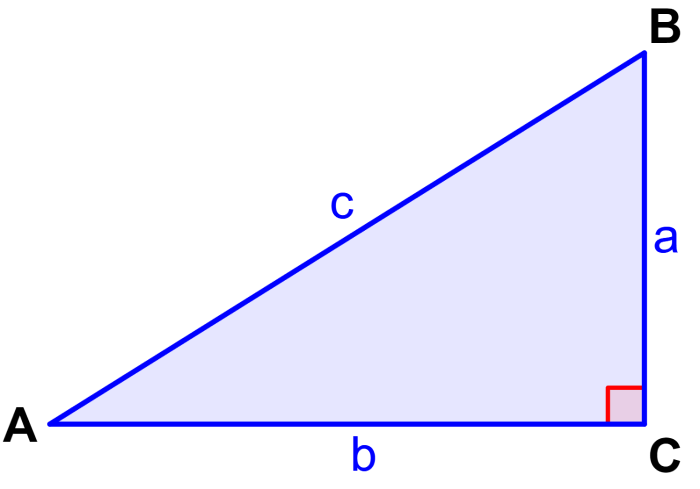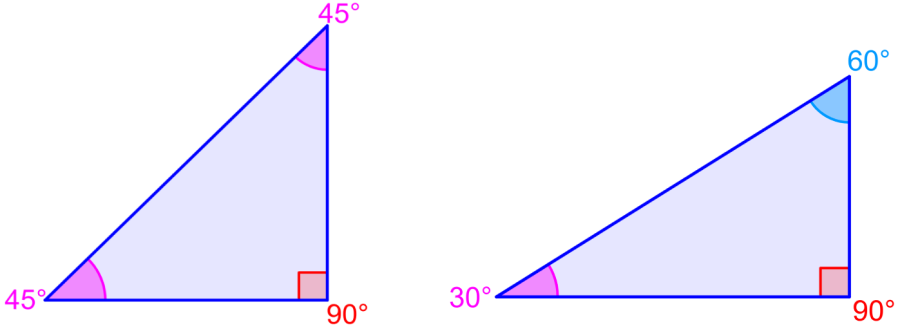The cotangent of an angle is the reciprocal of the tangent. Recall that the tangent is defined as the opposite side of a right triangle over the adjacent side. Also, a reciprocal function is equal to 1 over the original function. This means that the cotangent is equal to the adjacent side of a right triangle divided by the opposite side.
Here, we will learn about the cotangent in more detail. We will learn about the values of the cotangent of the most common angles and we will solve some practice problems.
Definition of cotangent of an angle
The cotangent of an angle in a right triangle is defined as the length of the adjacent side divided by the length of the opposite side.
We can also define the cotangent as the reciprocal of the tangent. A reciprocal function is equal to 1 divided by the original function. This means that the cotangent is equal to 1 over the tangent function. Remembering that the tangent is equal to the opposite side over the adjacent side, we have:
$latex \cot (\theta)=\frac{1}{\tan}=\frac{A}{O}$
where A is the side adjacent to the angle and O is the opposite side.
Formula for the cotangent in right triangles
We can use the definition of the cotangent and find formulas for the cotangent of the angles of the following right triangle ABC.

Commonly, we use lowercase letters to denote the sides of the triangle that are opposite the corresponding angle. For example, side a is opposite angle A, side b is opposite angle B, and side c is opposite angle C.
The cotangent of an angle in a right triangle is equal to the side adjacent to the angle divided by the opposite side:
| $latex \cot=\frac{\text{adjacent}}{\text{opposite}}$ |
This means that in the triangle above, we have $latex \cot(A) = \frac{b}{a}$ and also $latex \cot(B)= \frac{a}{b}$.
Cosecant for common special angles
We can determine the value of the cotangent for the most important angles using the proportions of the sides of special triangles. To find the cosecant of the angle 45°, we use the triangle 45°-45°-90°. This is a right triangle since it has an angle of 90°, so we can use the Pythagorean theorem: $latex {{c}^2}={{a}^2}+{{b}^2}$.
Two of the angles are equal (45°), so we have $latex a = b$. Therefore, the Pythagorean theorem becomes $latex {{c}^2}=2{{a}^2}$. This means that $latex c=a \sqrt{2}$.
This means that the sine and cosine of 45° are equal to $latex \frac{1}{\sqrt{2}}$, which is equal to $latex \frac{\sqrt{2}}{2}$. Since the cotangent can be defined as the cosine divided by the sine, the cotangent of 45° is equal to 1.

We can find the cotangent of 30° and 60° using the special triangle 30°-60°-90°. This triangle has sides of ratio 1:$latex \sqrt{3}$: 2. We can use the definitions of sine and cosine with these proportions and we have $latex \sin({{30}^{\circ}}) = \cos({{60}^{\circ}}) = \frac{1}{2}$ and we also have $latex \sin({{60}^{\circ}})=\cos({{30}^{\circ}}) = \frac{\sqrt{3}}{2}$.
| Degrees | Radians | Sine | Cosine | Cotangent |
| 90° | $latex \frac{\pi}{2}$ | 1 | 0 | 0 |
| 60° | $latex \frac{\pi}{3}$ | $latex \frac{\sqrt{3}}{2}$ | $latex \frac{1}{2}$ | $latex \frac{\sqrt{3}}{3}$ |
| 45° | $latex \frac{\pi}{4}$ | $latex \frac{\sqrt{2}}{2}$ | $latex \frac{\sqrt{2}}{2}$ | 1 |
| 30° | $latex \frac{\pi}{6}$ | $latex \frac{1}{2}$ | $latex \frac{\sqrt{3}}{2}$ | $latex \sqrt{3}$ |
| 0° | 0 | 0 | 1 | Undefined |
Cotangent of an angle – Examples with answers
The following cotangent examples of an angle are solved using the formula seen above. Each of the following examples refers to the right triangle seen above, so the notation of the sides is the same.
EXAMPLE 1
If we have $latex \cot(A) = 1.6$ and $latex b = 5$, what is the value of a?
Solution
We use the right triangle above as a reference and we have the relation $latex \cot (A) = \frac{a}{b}$. Therefore, we substitute the given values in this relation:
$latex \cot(A)=\frac{a}{b}$
$latex 1.6=\frac{a}{5}$
$latex a=5(1.6)$
$latex a=8$
The value of the a side is equal to 8.
EXAMPLE 2
Determine the value of side b if we have $latex a = 10$ and $latex \cot(B)= 1.8$.
Solution
Referencing the triangle above, we have the relationship $latex \cot(B) = \frac{a}{b}$. We use this formula with the given values and solve for b:
$latex \cot(B)=\frac{a}{b}$
$latex 1.6=\frac{10}{b}$
$latex b=\frac{10}{1.6}$
$latex b=6.25$
The value of b is 6.25.
EXAMPLE 3
If we have $latex a =2$ and $latex b = 2 \sqrt{3}$, what is the value of angle A?
Solution
By referencing the triangle above, we form the relationship $latex \cot(A) = \frac{b}{a}$. Therefore, using the given values, we have:
$latex \cot(A)=\frac{b}{a}$
$latex \cot(A)=\frac{2\sqrt{3}}{2}$
$latex \cot(A)=\sqrt{3}$
We find angle A using a calculator with the function $latex {{sec}^{-1}}$ or we can use the table above. Therefore, we have:
$latex A=30$°
Angle A measures 30°.
→ Cotangent Calculator (Degrees and Radians)
Cotangent of an angle – Practice problems
Solve the following problems using what you have learned about the cotangent of an angle. These problems refer to the right triangle seen above, so they use the same notation for sides and angles.
See also
Interested in learning more about secant, cosecant, and cotangent? Take a look at these pages:




